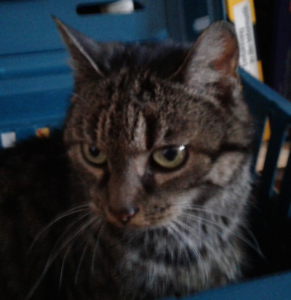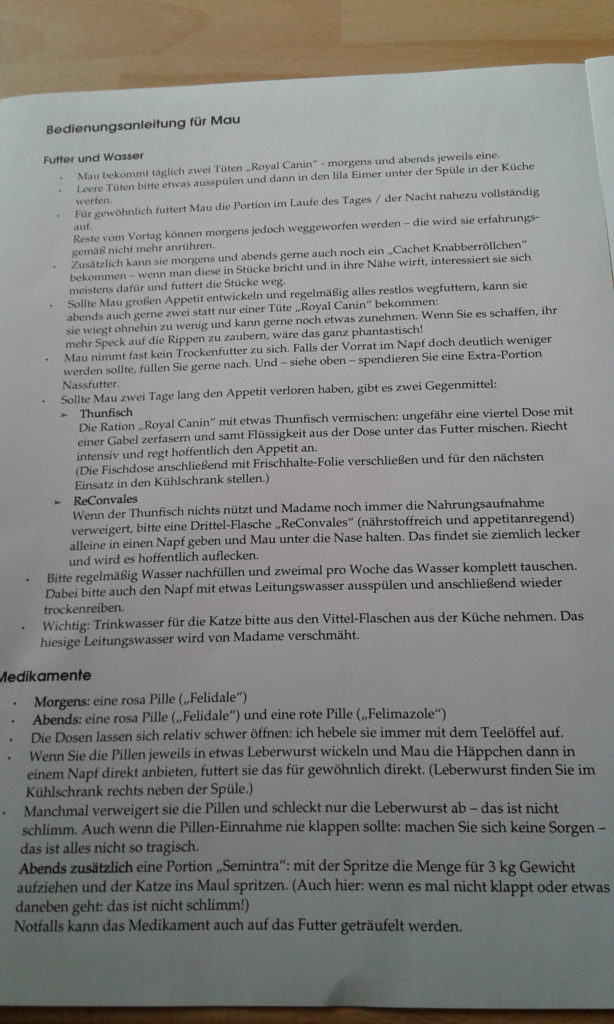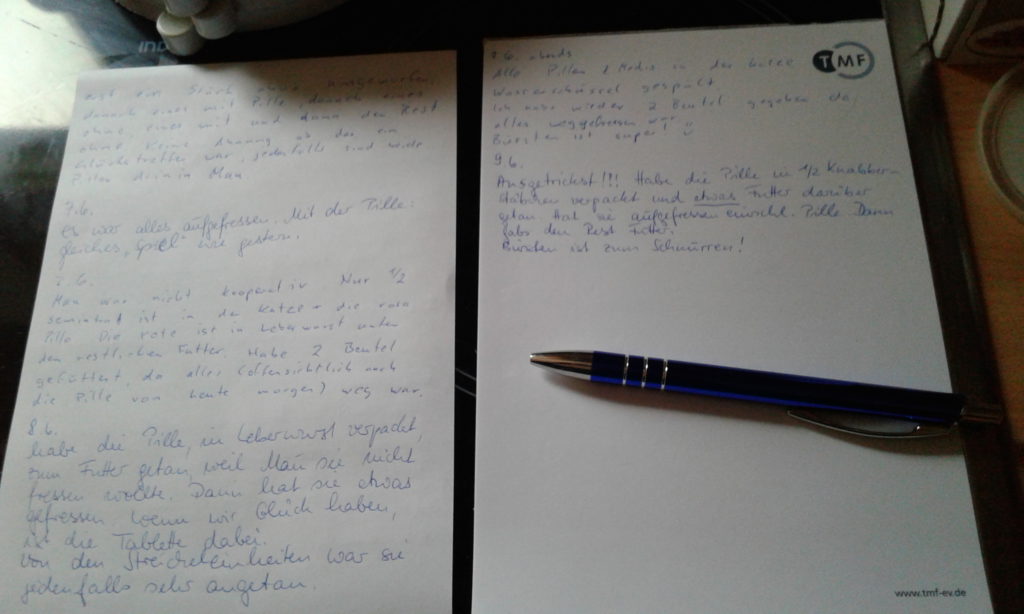For all of us working on the task to improve documentation in our museums it is often hard to get the point across to the colleagues who are not so deeply involved in the discussions about standards and long-term preservation. Maybe we are too deeply involved to make the concept clear. Maybe we have to take a different approach. Maybe we have to tell the story from a different angle. Let’s try it this way:

Who wouldn’t like to care for such a fluffy old lady?
As the owner loved his cat, he wrote down a few pages of “instruction manual” including all of the cat’s needs. It stated what drugs, how many, when and how needed to find their way inside the cat. It also stated some tricks that went well in the past, like hiding pills inside a special kind of sausage. He also held a training session before he left so we could practice the application under his supervision.

The “instruction manual” for the cat

The diary
What does this story have to do with documentation?
Well, the underlying concept here is care. All people involved did what they did because they cared. Now, the objects in our collections are not living, purring creatures. But as we care for them, we do something very similar with documentation:
- We make sure that everything that is important to know about our collection is stored in a central document or documents, quite like the “instruction manual” for the cat. They state what, why, when and how things have to be done. These are mainly our handling instructions and some of it might be found in our collections policy.
- We also make sure that these documents are accessible to everybody who is involved in caring for our collections.
In our story the “instruction manual” was stored on the kitchen table so everybody could turn to it as a reference in case of doubt. It would not have been a good solution if the owner just had handed it to both catsitters: in case one catsitter fell ill, a replacement would not have had access to the document. - We create possibilities to document what happened to our objects. We make sure that everybody can learn what happened when to an object, no matter if she or he works with the object in one hour or in 20 years. That’s why we take down object related information like damages, location changes, loans or conservation treatment in our object’s records, just like we did with the “diary” for the cat.
- We use clear language and avoid slang so no matter who is reading our documentation in the future is able to understand what we mean.
- Finally, we don’t rely on documents alone. We also hold training sessions about how to update an object record correctly and how to handle our objects.
So, next time a colleague fails to report a location change or damage, maybe don’t bore her or him with a lecture on the importance of documentation. Instead you might like to tell a story of a lovely, elderly, purring little cat.
Angela
Wow Angela, you certainly haven’t lost your touch! The cat analogy works very well, and I love the way you point out the connections to collections work, just in case any of us missed them. I also enjoyed the creativity in finding ways to entice the cat to take her meds, and the clarity explaining the methods. You are a consummate communicator and a born teacher!
Just sent this to my family so they can understand some of what I do! Happy holidays, Angela!
I also love cats (have 4) and this analogy is spot on! It’s a good teaching tool for those at your museum who have no clue about what collections management is all about. But they do understand taking care of animals. Thank you so much for sharing this.
A very sympathetic way to explain how complex documentations should and could be and that every single step has its own importance and consequences for future works.
Brovo, Angela – Very good story and lesson! Blotto approves!
as a cat lover I love this analogy!